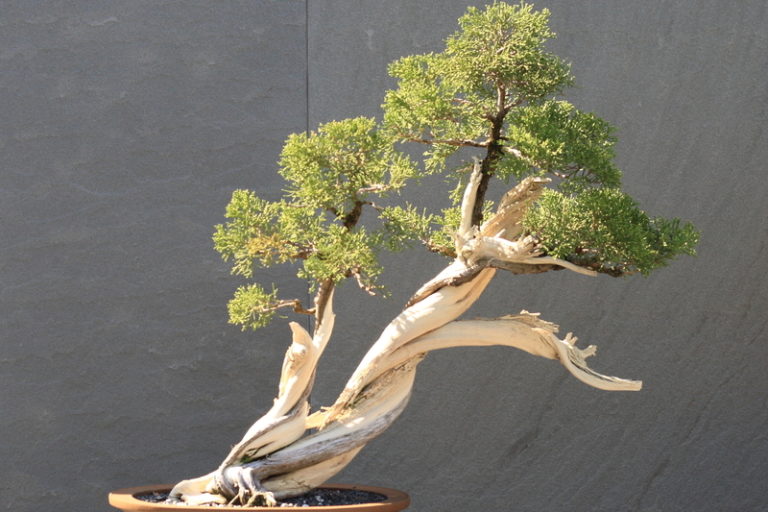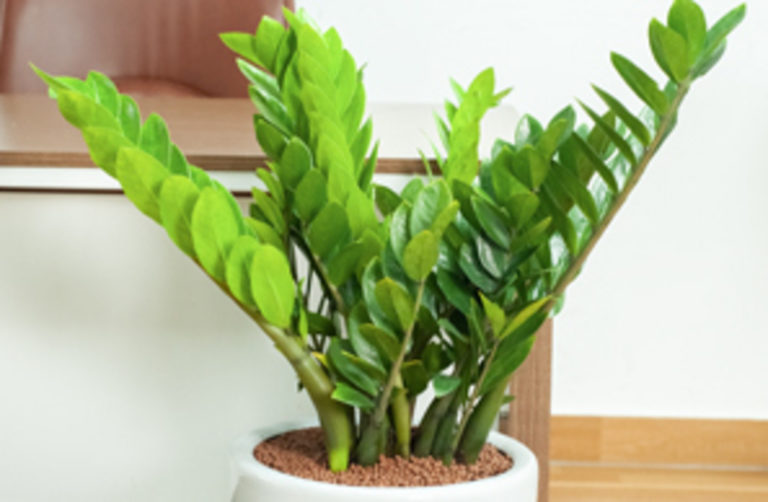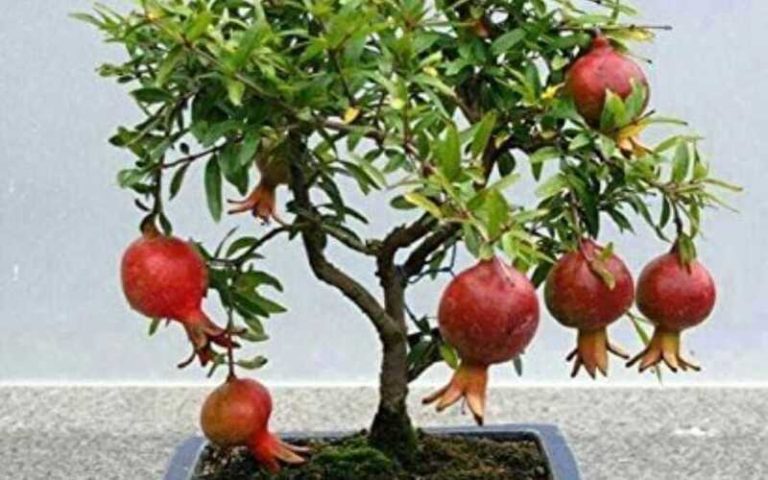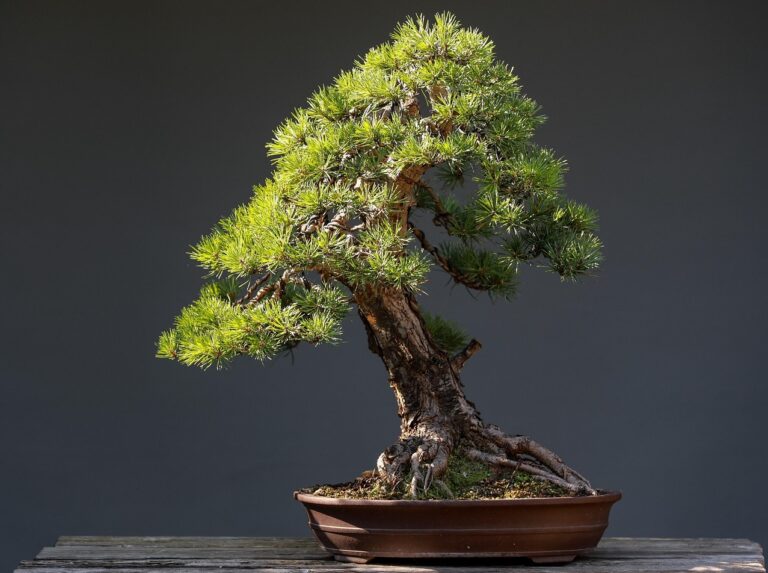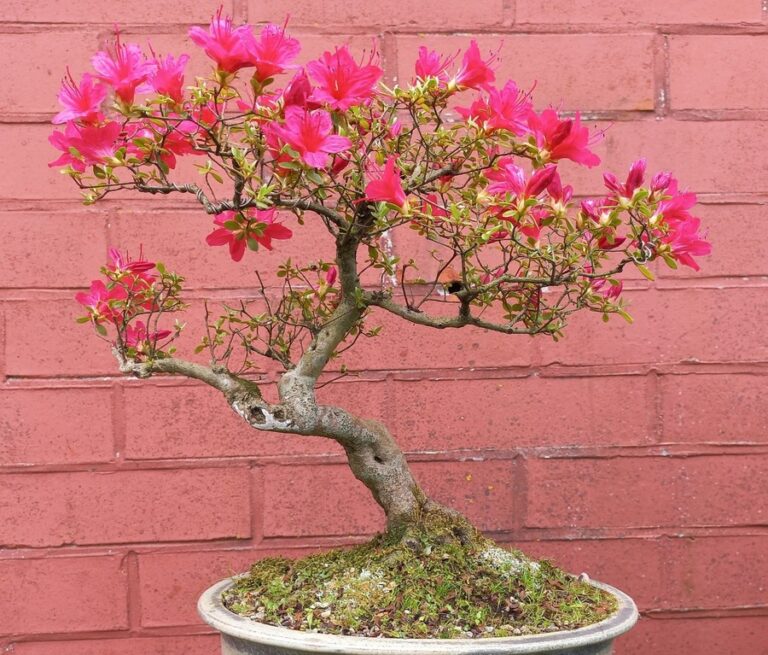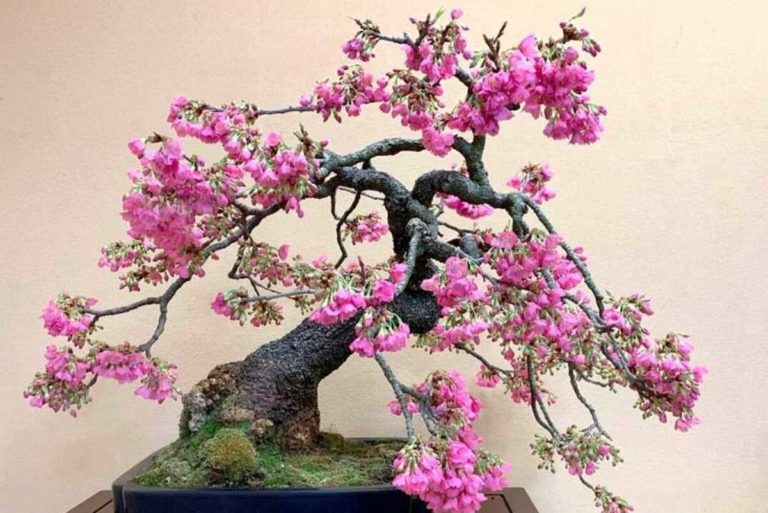Sitka Spruce Bonsai : Unlocking the Artistry and Serenity
Bonsai is the art of growing small trees in pots. It’s a beautiful way to connect with nature and make a peaceful space. A unique type of bonsai tree is the Sitka spruce bonsai tree. In this article, we’ll talk about what makes Sitka spruce bonsai unique, how to grow and style them, and how to take care of them.
What is a Sitka Spruce Bonsai?
A Sitka spruce bonsai is a small tree that is grown and made in the style of a bonsai. It still has the same conical shape, short green needles, and thick greenery that are typical of the Sitka spruce. Bonsai fans make a small version of the Sitka spruce in a bonsai pot or container by carefully cutting and training the tree. Sitka spruce bonsai needs specific care, such as the right amount of water, light, and trimming, to stay small and beautiful. People like it because it looks nice and makes any place feel calm.
History and Origins of the Sitka Spruce Bonsai
The Sitka spruce bonsai’s history and origins may be traced back to the art of bonsai itself, which started in China over a thousand years ago and then moved to Japan. For ages, Asian culture has been strongly established in the tradition of nurturing small trees in pots.
Because of its magnificent size, gorgeous foliage, and ability to adapt well to bonsai culture techniques, the Sitka spruce, a stately tree native to the coastal areas of North America, has become a favorite option for bonsai aficionados. While the precise year Sitka spruce was initially introduced as a bonsai species is unknown, it is said to have acquired popularity throughout the twentieth century as the art of bonsai spread globally.
The peculiar qualities of the Sitka spruce, such as its conical form, short needles, and thick foliage, were identified by bonsai aficionados and horticulturists as making it an ideal choice for bonsai training. They were able to capture the spirit of the full-sized Sitka spruce in a smaller form by meticulous cultivation, trimming, and shape.
As bonsai cultivation and appreciation became more widespread, Sitka spruce bonsai gained recognition for its beauty and artistic value. Today, Sitka spruce bonsai can be found in bonsai collections, exhibitions, and nurseries around the world. It continues to captivate bonsai enthusiasts with its graceful appearance and the tranquil atmosphere it brings to indoor and outdoor spaces.
Sitka spruce bonsai has a rich history that parallels that of bonsai itself. It exemplifies the knowledge, creativity, and reverence for the natural world that bonsai enthusiasts have passed down from one generation to the next..
Sitka Spruce Bonsai and Their Symbolism
Sitka spruce bonsai, like many other bonsai tree varieties, carry symbolic meanings that have been associated with them throughout history. Here are some common symbolisms associated with Sitka spruce bonsai:
- Resilience: The durability of Sitka spruce trees under difficult environmental circumstances, particularly near coasts, is well recognized. They represent strength and tenacity in the face of hardship as bonsai. They serve as a reminder that even in difficult circumstances, one may persevere and prosper.
- Stability: The Sitka spruce bonsai’s sturdy trunk and well-spaced branches represent stability. They symbolize a solid foundation and rootedness, reminding us to stay grounded and balanced in our lives.
- Longevity: Sitka spruce trees have a lengthy lifetime, frequently lasting hundreds of years. They represent lifespan and durability as bonsai. They serve as a reminder of the value of patience and taking the long view in life.
- Wisdom: Bonsai, in general, are considered living works of art and are associated with the wisdom of nature. The Sitka spruce bonsai, with its age and graceful appearance, represents wisdom and deep understanding. It symbolizes the wisdom gained through time and the importance of cultivating knowledge and experience.
- Tranquility: Bonsai, including Sitka spruce bonsai, are renowned for creating a sense of serenity and tranquility. They symbolize peace, harmony, and a connection to nature. Sitka spruce bonsai can be used as a meditative focal point, providing a calming presence in indoor or outdoor spaces.
- Balance: Bonsai stresses the harmony between nature and human intervention. Sitka spruce bonsai represent the harmony attained via rigorous shaping and pruning procedures needed to produce the desired shape. They serve as a reminder of the significance of establishing balance in our own life, balancing diverse areas including job, family, and personal well-being.
Sitka spruce bonsai, like all bonsai trees, carry symbolic meanings that can vary based on cultural and personal interpretations. These symbolisms add depth and significance to the art of bonsai, making Sitka spruce bonsai not only visually appealing but also rich in symbolic value.
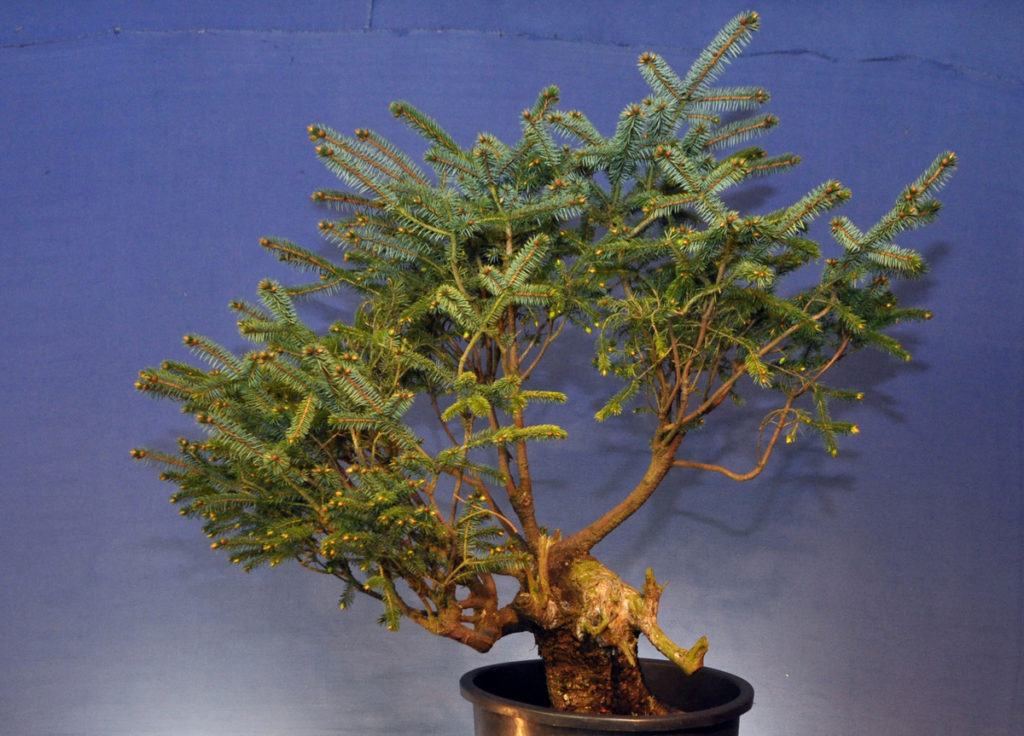
Characteristics of the Sitka Spruce Bonsai
The Sitka spruce bonsai exhibits several distinct characteristics that make it unique and captivating. Here are some key features of the Sitka spruce bonsai:
Conical Shape: The Sitka spruce bonsai develops naturally in a conical form, similar to its full-sized counterpart. The trunk is slim at the base and taper upwards to provide a beautiful and graceful profile.
Short Needles: Sitka spruce bonsai has short, vibrant green needles that densely cover its branches. The needles are arranged in a spiral fashion around the branch, giving the bonsai a lush and compact appearance.
Dense Foliage: The foliage of the Sitka spruce bonsai is dense and full, providing a rich green canopy. The branches of the bonsai are typically well-developed and branch out in a balanced manner, creating a visually appealing and harmonious composition.
Bark Texture: The bark of the Sitka spruce bonsai is smooth and often displays a reddish-brown coloration. As the bonsai ages, the bark can develop interesting patterns and textures, adding to its aesthetic appeal.
Adaptability: The adaptability of Sitka spruce bonsai to varied settings is well recognized. It can withstand a wide variety of temperatures, making it appropriate for growing both indoors and outdoors. Because of its flexibility, it is a favorite option among bonsai lovers all around the world.
Graceful Movement: The branches of a Sitka spruce bonsai glide gently and flowingly, mimicking the tree’s natural development pattern. This elegant movement lends dynamism and beauty to the bonsai’s overall appearance.
Size and Proportion: The Sitka spruce bonsai is typically smaller in size compared to its full-sized counterpart. It is carefully trained and pruned to maintain its miniature form while preserving the essential proportions and characteristics of the Sitka spruce tree.
These traits, taken together, add to the charm and beauty of the Sitka spruce bonsai. They contribute to it being an aesthetically appealing and compelling bonsai species, providing a sense of calm and natural beauty when presented in homes, gardens, or bonsai shows.
Types of Sitka Spruce Bonsai
There are different types or styles of Sitka spruce bonsai that can be created based on the desired aesthetic and design. Here are a few common types of Sitka spruce bonsai:
1. Formal Upright Style: In this style, the Sitka spruce bonsai is trained to have a straight and upright trunk, with branches gradually decreasing in size as they ascend. The overall form is symmetrical and conveys a sense of strength and elegance.
2. Slanting Style: The trunk of the Sitka spruce bonsai is tilted at an angle in this technique, creating a dynamic and visually fascinating arrangement. The branches are positioned to complement the slanted stem, creating the impression of movement and energy.
3. Cascade Style: The stem of a Sitka spruce bonsai descends downward in the cascade style, mimicking a tree growing on a cliff or mountain slope. This look is bold and compelling, emphasizing toughness and adaptability.
4. Windswept Style: The windswept style imitates the effect of strong winds on the Sitka spruce tree. The trunk and branches are shaped to have a distinct leaning or bending, as if sculpted by the force of nature. This style conveys a sense of strength and endurance in the face of adversity.
5. Informal Upright Style: With a slightly curved or meandering trunk, the casual upright design strives for a more natural and organic appearance. The branches are positioned asymmetrically to resemble nature’s uneven growth patterns. This style embodies spontaneity and natural beauty.
These are only a few examples of Sitka spruce bonsai styles that may be made. Bonsai lovers and artists frequently experiment with various techniques and combinations to attain their desired aesthetic, resulting in a diverse spectrum of one-of-a-kind and individualized Sitka spruce bonsai designs.
How to Grow a Sitka Spruce Bonsai
Growing a Sitka spruce bonsai requires attention to specific care practices to ensure its health and development. Here is a step-by-step guide on how to grow a Sitka spruce bonsai:
1. Selection of a Healthy Specimen:
- Choose a healthy Sitka spruce tree that has a sturdy trunk, well-spaced branches, and vibrant green needles.
- Ensure that the tree has a good root system and shows no signs of pests or diseases.
2. Potting and Soil:
- Select a bonsai pot or container that has drainage holes to allow excess water to escape.
- Use a well-draining soil mixture suitable for coniferous trees, such as a blend of bonsai soil, perlite, and organic matter.
- Place a drainage layer of coarse gravel or bonsai soil at the bottom of the pot.
3. Positioning and Lighting:
- Place the Sitka spruce bonsai in a location that receives bright, indirect sunlight. A windowsill or a spot with filtered light works well.
- Protect the bonsai from extreme temperatures and strong winds.
4. Watering:
- Water the bonsai thoroughly when the top inch of the soil feels slightly dry. Ensure that water reaches all parts of the root system.
- Avoid overwatering or letting the bonsai sit in water, as it can lead to root rot.
- Adjust the watering frequency based on the season and environmental conditions.
5. Pruning and Training:
- Prune the Sitka spruce bonsai regularly to maintain its desired shape and encourage branching.
- Remove any dead, weak, or overcrowded branches to promote a balanced and open structure.
- Use bonsai wire to gently shape and train branches into the desired positions. Be careful not to damage the delicate branches.
6. Fertilization:
- Apply a balanced bonsai fertilizer during the growing season, following the instructions on the packaging.
- Fertilize sparingly during winter or when the tree is dormant.
7. Protection from Pests and Diseases:
- Regularly inspect the Sitka spruce bonsai for pests such as aphids or spider mites. Treat infestations with appropriate organic insecticides.
- Monitor for signs of diseases like root rot or fungal infections. Ensure proper watering practices to prevent these issues.
8. Seasonal Care:
- In winter, protect the bonsai from freezing temperatures by placing it in a sheltered location or using frost protection.
- During spring and summer, encourage new growth by providing adequate light and watering.
- Prune back new growth in spring to maintain the desired shape and size.
Growing a Sitka spruce bonsai requires patience and regular care. By following these steps and tailoring the care to the specific needs of your Sitka spruce bonsai, you can nurture a healthy and beautiful miniature tree that brings joy and tranquility to your space.
Benefits of the Sitka Spruce Bonsai
The Sitka spruce bonsai offers several benefits to bonsai enthusiasts and admirers alike. Here are some key benefits of growing a Sitka spruce bonsai:
1. Aesthetic Appeal: The Sitka spruce bonsai showcases the beauty of the Sitka spruce tree in a miniature form. Its conical shape, short vibrant green needles, and dense foliage create an aesthetically pleasing display. The bonsai’s elegant and graceful appearance can enhance the ambiance of any indoor or outdoor space.
2. Connection with Nature: Growing a Sitka spruce bonsai allows for a more intimate connection with nature. The process of cultivating and caring for a living tree can induce a sense of tranquility, mindfulness, and a deeper appreciation for nature’s majesty.
3. Artistic Expression: The art form of Sitka spruce bonsai permits bonsai enthusiasts to express their creativity and artistic vision. The contouring and decorating of bonsai through pruning and training techniques enables individuals to create unique and personalized designs that demonstrate their artistic abilities.
4. Miniature Size: The tiny size of the Sitka spruce bonsai makes it appropriate for apartments and small gardens. It enables individuals to experience the pleasure of cultivating and caring for a tree in a confined space.
5. Educational Value: Growing a Sitka spruce bonsai allows you to learn about the Sitka spruce species’ natural growth patterns, maintenance requirements, and attributes. It provides hands-on gardening experience and fosters a greater grasp of the complexities of tree development.
6. Longevity: Sitka spruce trees have lengthy lives, and if cared for correctly, Sitka spruce bonsai can live for many years. This enables bonsai devotees to develop a long-term relationship with their trees, observing their development over time.
7. Conversation Starter: The unique and captivating appearance of a Sitka spruce bonsai can spark conversations and intrigue among friends, family, and guests. It serves as a beautiful focal point and a unique talking point, allowing individuals to share their passion for bonsai and the natural world.
8. Personal Satisfaction: Successfully growing and caring for a Sitka spruce bonsai can bring a sense of personal satisfaction and accomplishment. The progress and transformation of the bonsai over time, as well as the ability to shape and refine its design, provide a rewarding and fulfilling experience.
The Sitka spruce bonsai provides a variety of benefits, including aesthetic appeal, a personal connection to nature, and the opportunity for artistic expression. It is an enjoyable and rewarding activity for bonsai enthusiasts and nature aficionados equally.
Displaying and Showcasing the Sitka Spruce Bonsai
Displaying and showcasing a Sitka spruce bonsai is an opportunity to highlight its beauty and create an appealing focal point in your space. Here are some tips for displaying and showcasing your Sitka spruce bonsai:
Selecting the Right Location:
- Choose a location that provides adequate light for the Sitka spruce bonsai. It should receive bright, indirect sunlight for a significant portion of the day.
- Avoid placing the bonsai in areas with extreme temperature fluctuations or strong drafts.
- Consider the overall aesthetic of the space and how the Sitka spruce bonsai will complement the existing décor.
Bonsai Stand or Display Table:
- Use a bonsai stand or display table to elevate and highlight the Sitka spruce bonsai. This allows for better visibility and appreciation of its features.
- Select a stand or table that complements the style and aesthetic of the bonsai. Wooden or stone stands often work well for a natural and harmonious appearance.
Accent Elements:
- Enhance the overall display by incorporating accent elements such as rocks, moss, or small figurines. These elements can add depth, texture, and a natural touch to the display.
- Choose accent pieces that harmonize with the size and style of the Sitka spruce bonsai, creating a cohesive and visually appealing arrangement.
Rotating Display:
- Rotate the position of the Sitka spruce bonsai periodically to ensure even growth and light exposure. This will help prevent the tree from leaning towards one side or developing uneven branches.
Exhibition and Events:
- Consider participating in bonsai exhibitions or events where you can showcase your Sitka spruce bonsai alongside other bonsai enthusiasts. This provides an opportunity to share your bonsai with a wider audience and receive feedback from experts.
Photography:
- Capture the beauty of your Sitka spruce bonsai through photography. Photograph the bonsai from different angles and in various lighting conditions to showcase its unique features. Share these photographs on social media or in bonsai communities to inspire others and receive feedback.
Regular Maintenance:
- Ensure that the Sitka spruce bonsai is well-maintained, with regular pruning, wiring, and watering. This will keep the tree healthy and visually appealing, enhancing its display value.
Remember to regularly admire and appreciate your Sitka spruce bonsai as it grows and develops. Its unique characteristics and serene presence will surely be a source of joy and tranquility in your space.

Styling and Design of Sitka Spruce Bonsai
The styling and design of a Sitka spruce bonsai are crucial in creating a visually appealing and harmonious composition. Here are some considerations and techniques for styling and designing a Sitka spruce bonsai:
Bonsai Styles:
- Explore different bonsai styles, such as formal upright, slanting, cascade, windswept, or informal upright, and consider which style suits your vision for the Sitka spruce bonsai.
- Each style has specific characteristics and aesthetics that can be adapted to the unique features of the Sitka spruce bonsai.
Trunk Selection and Movement:
- Select a primary trunk line that exhibits an interesting and appealing movement. It can be straight, slightly curved, or even have a gentle S-shape.
- Emphasize the natural movement of the Sitka spruce bonsai by using wiring techniques to create graceful curves or bends in the trunk and branches.
Branch Placement and Arrangement:
- Place branches in a balanced and visually pleasing manner. Aim for a well-spaced distribution that enhances the overall composition.
- Consider the tree’s natural growth patterns and replicate them in the bonsai design. Avoid overcrowding or having branches growing in parallel.
Branch Pruning and Thinning:
- Regularly prune the Sitka spruce bonsai to maintain its shape and encourage ramification (the development of smaller branches).
- Thin out excessive foliage to maintain a realistic representation of a mature Sitka spruce. Create open spaces within the foliage for a more natural appearance.
Apex and Canopy Development:
- Pay attention to the apex (top of the tree) to create a well-defined and balanced crown. Trim and shape the upper branches to maintain a compact and attractive canopy.
- The Sitka spruce bonsai naturally forms a conical shape, so ensure that the apex remains higher than the rest of the tree to maintain the characteristic silhouette.
Wiring and Positioning:
- Use bonsai wire to gently guide and position branches into desired shapes and positions.
- Be careful not to damage the delicate branches while wiring, and regularly monitor the wire to prevent it from cutting into the bark.
Patience and Regular Maintenance:
- Remember that styling a Sitka spruce bonsai is a gradual process. It takes time for the tree to respond to pruning and shaping techniques.
- Regularly maintain the bonsai by pruning back new growth, wiring as needed, and adjusting the branch positions to achieve the desired design.
Remember, styling and designing a Sitka spruce bonsai is an artistic process that requires creativity, observation, and patience. Allow the tree’s natural beauty to guide your decisions and adapt the techniques to bring out its unique character. With time and careful craftsmanship, you can create a stunning Sitka spruce bonsai that reflects your artistic vision and appreciation for this remarkable tree species.
How to Care for and Maintain a Sitka Spruce Bonsai
Caring for and maintaining a Sitka spruce bonsai is essential to ensure its health and vitality. Here are some guidelines for proper care and maintenance of a Sitka spruce bonsai:
1. Watering:
- Check the moisture level of the soil regularly and water when the top inch feels slightly dry. Avoid letting the soil completely dry out or become waterlogged.
- Water thoroughly, ensuring that water reaches all parts of the root system. Allow excess water to drain away from the bonsai.
2. Light and Temperature:
- Place the Sitka spruce bonsai in a location that receives bright, indirect sunlight for several hours a day. It thrives in full sunlight but can tolerate partial shade.
- Protect the bonsai from extreme temperature fluctuations. Ideally, maintain a moderate temperature range of 60-75°F (15-24°C).
3. Humidity:
- Sitka spruce bonsai prefers a humid environment. Increase humidity by misting the foliage with water regularly, especially during dry periods or in heated indoor environments.
- Alternatively, place the bonsai on a humidity tray filled with water and pebbles. Ensure that the water level is below the tray’s surface to prevent the roots from sitting in water.
4. Pruning and Wiring:
- Prune the Sitka spruce bonsai regularly to maintain its shape and remove any dead, weak, or overcrowded branches.
- Use bonsai wire to gently shape and position branches. Be careful not to leave the wire on for too long to prevent it from cutting into the branches.
5. Fertilization:
- Feed the Sitka spruce bonsai with a balanced, slow-release bonsai fertilizer during the growing season (spring to early autumn).
- Follow the fertilizer’s instructions for application rates and frequency. Avoid over-fertilization, as it can damage the bonsai.
6. Protection from Pests and Diseases:
- Inspect the Sitka spruce bonsai regularly for pests such as aphids, spider mites, or scale insects. If detected, treat them promptly with appropriate organic insecticides.
- Maintain good airflow around the bonsai to prevent the development of fungal diseases. Avoid overwatering and ensure proper drainage.
7. Seasonal Care:
- In winter, protect the Sitka spruce bonsai from freezing temperatures by placing it in a sheltered location or using frost protection.
- During spring, encourage new growth by providing adequate light and fertilization. Prune back new growth to maintain the desired shape and size.
- In summer, monitor the bonsai’s water needs more closely due to increased evaporation.
8. Repotting:
- Repot the Sitka spruce bonsai every 2-3 years to refresh the soil and promote healthy root growth.
- Repot during early spring before new growth begins, using a well-draining bonsai soil mixture.
Regular observation and care are essential for the overall well-being of the Sitka spruce bonsai. Adjust your care routine based on the specific needs of your bonsai, taking into account environmental conditions and the tree’s growth patterns. By providing proper care and maintenance, you can enjoy a healthy and thriving Sitka spruce bonsai for many years to come.
Sitka Spruce Bonsai Care Sheet
| Watering | – Check moisture level; water when top inch of soil feels dry |
| – Water thoroughly, ensuring proper drainage | |
| Sunlight | – Bright, indirect sunlight for several hours a day |
| – Protect from extreme temperature fluctuations | |
| Temperature | – Moderate range: 60-75°F (15-24°C) |
| Humidity | – Increase humidity by misting foliage or using a humidity tray |
| – Prevent roots from sitting in water | |
| Fertilization | – Balanced, slow-release bonsai fertilizer during growing season |
| – Follow instructions for application rates and frequency | |
| Pruning and Trimming | – Regularly prune to maintain shape and remove dead/weak branches |
| Wiring and Styling | – Use wire to shape branches; avoid leaving it on too long |
| Repotting | – Every 2-3 years in early spring |
| – Use well-draining bonsai soil mixture | |
| Pest and Disease Control | – Regularly inspect for pests like aphids or spider mites |
| – Treat with appropriate organic insecticides | |
| Winter Care | – Protect from freezing temperatures |
| – Place in a sheltered location or use frost protection | |
| Regular Maintenance | – Monitor growth and adjust care accordingly |
| – Prune back new growth as needed |
Please note that this is a general care sheet, and specific care requirements may vary depending on your individual Sitka Spruce Bonsai and your local climate. Regular observation and responsiveness to the needs of your bonsai will help ensure its overall health and well-being.
Conclusion:
Bonsai cultivation of Sitka spruce is a pleasurable and rewarding experience. You can cultivate a gorgeous miniature tree that adds serenity to your living space by adhering to the correct maintenance procedures. Embrace the art of bonsai and discover the unique allure of Sitka spruce bonsai on a voyage that will profoundly connect you with nature.
FAQ:
Q: What is a Sitka Spruce Bonsai?
A: A Sitka spruce bonsai is a miniature version of the Sitka spruce tree (Picea sitchensis) that is cultivated and trained in a bonsai style. It retains the unique characteristics of the Sitka spruce, such as its conical shape, short needles, and dense foliage, while being carefully pruned and shaped to create a small, artistic representation of the full-sized tree.
Q: Is spruce good for bonsai?
A: Yes, spruce trees, including Sitka spruce, can be suitable for bonsai cultivation. Spruce bonsai trees have appealing features like their dense foliage, fine branching, and unique needle structure, making them attractive choices for bonsai enthusiasts. They can create a striking and elegant presence when properly cared for and styled.
Q: What spruce is best for bonsai?
A: While Sitka spruce is a popular option for bonsai, other spruce varieties can also be used for bonsai. Some prevalent spruce species appropriate for bonsai include Blue Spruce (Picea pungens), White Spruce (Picea glauca), and Serbian Spruce (Picea omorika). Each species has distinct characteristics and growth patterns, allowing for a variety of bonsai designs.
Q: Can I make a bonsai with a cypress tree?
A: Yes, cypress trees can be utilized for bonsai. Hinoki Cypress (Chamaecyparis obtusa), Arizona Cypress (Cupressus arizonica), and Leyland Cypress ( Cuprocyparis leylandii) are the most popular cypress species for bonsai. These trees can be shaped and trained into gorgeous bonsai forms and have beautiful foliage and distinctive bark.
Q: Can you grow spruce bonsai indoors?
A: While spruce bonsai trees are normally grown outside because to their light and temperature needs, they may be grown indoors under particular conditions. Sitka spruce bonsai and other spruce species can be temporarily maintained indoors during the winter or adverse weather conditions. However, enough light, humidity, and temperature regulation are required to guarantee the bonsai’s health and prevent concerns like as low growth or pest infestations.
Q: How long does it take for a Sitka spruce bonsai to mature?
A: How long it takes for a Sitka spruce bonsai to grow up depends on many things, such as how old the tree was when it was first made into a bonsai, the size and shape you want it to be, and how well you take care of it. Most of the time, it can take a few years for a Sitka spruce bonsai to look full and grown.
Q: Can Sitka spruce bonsai tolerate cold temperatures?
A: Yes, Sitka spruce bonsai are generally cold-hardy and can tolerate freezing temperatures. However, it is essential to protect them from extreme cold and freezing winds during winter. Providing shelter or using frost protection techniques can help safeguard the bonsai’s health during the colder months.
Q: How often should I repot my Sitka spruce bonsai?
A: Every two to three years, Sitka spruce bonsai should be repotted, preferable in early spring before new growth begins. Repotting renews the soil, encourages healthy root development, and preserves the bonsai’s overall health. However, the frequency of repotting can vary based on the tree’s growth rate, root development, and soil condition.
Q: Can Sitka spruce bonsai be wired?
A: Yes, Sitka spruce bonsai can be wired to shape and position the branches. Wiring is typically done during the tree’s active growth period when the branches are flexible enough to be gently manipulated. It is important to use care while wiring to avoid damaging the branches and regularly monitor the wire to prevent it from cutting into the bark.
Q: What is the best time to prune my Sitka spruce bonsai?
A: The best time to prune a Sitka spruce bonsai is during the tree’s dormant period, which is typically in late winter or early spring before new growth begins. Pruning during this time helps stimulate new growth and allows the bonsai to heal and recover before the growing season. However, minor pruning to remove dead, weak, or undesirable growth can be done throughout the year.
Also Read:



